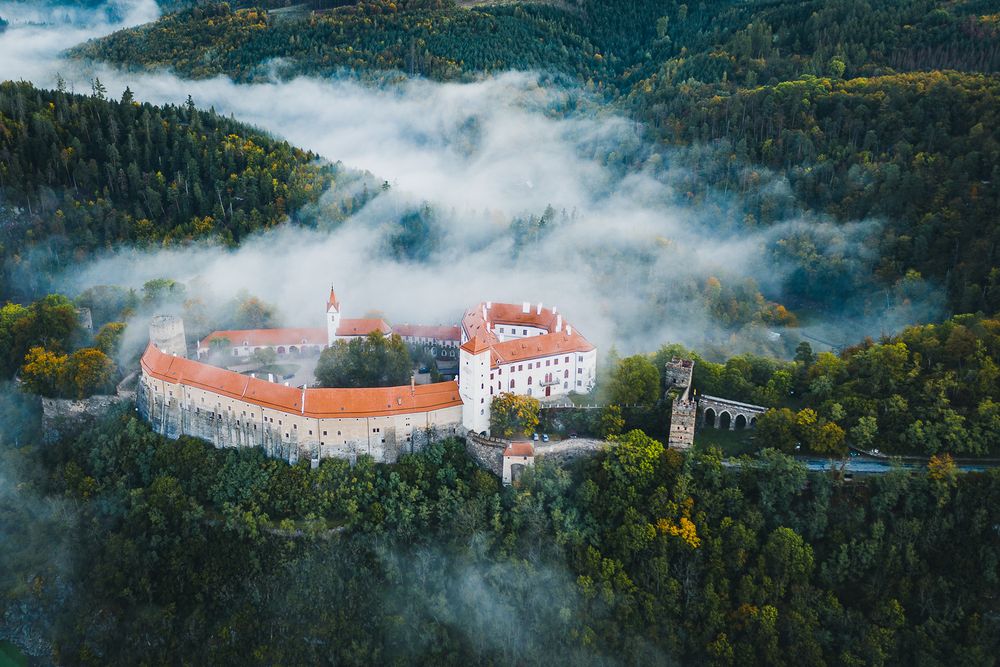About 25 kilometers northwest of Znojmo, in Czech Republic, where the rivers Želetavka and Dyje meet, lies the small village of Bitov. Here, on a dramatic promontory overlooking the confluence and the vast swaths of forest and wilderness stands the Bitov castle. Built in the 11th century, Bítov is one of the oldest and largest Moravian castles.
Throughout its long history Bitov was owned by a number of different noblemen and rulers, each of whom have left their imprints on the castle’s history and design. There are Neo Gothic furniture in the dining room dating to 1860, and porcelain in the smoking room that once belonged to the Haas family, who were co-owners of a famous porcelain manufacturer, one of the oldest in the Czech lands. And then, there is this surreal collection of taxidermied dogs, which is one of the highlights of the castle.

The castle’s last owner Baron Georg Haas junior was an animal lover, and sort of eccentric. He was the proud owner of thousands of animals, birds and exotic creatures from around the world, including a lioness called Mietzi-Mausi, with whom he enjoyed sharing lunch every day. But his favorite pet was the humble canine of which he had more than 200 in the castle grounds.
When the dogs passed away, the baron buried the majority of them in the castle’s cemetery. Each grave is decorated with a wooden cross and small metal plate bearing their name. But a select few underwent special treatment in the workshop of the local taxidermist where they were stuffed and poised with their heads up and ears cocked, as if lying patiently in wait of their master’s return. The collection which consist of terriers, spaniels, poodles, boxers and hounds of every shape and size is in the Guinness Book of Records as the largest of its kind.

Kan Bider, the warden of Bitov Castle, is responsible for taking care of the collection.
After the establishment of the Protectorate of Bohemia and Moravia, Bítov Castle and the village became part of the Protectorate. Although Haas was a vocal anti-Fascist and anti-Nazi during the Second World War, he was was nevertheless an ethnic German. At the end of the war he was given just 24 hours by Czech partisans to leave everything he owned behind and get out of the country. Heart-broken, Haas committed suicide by shooting himself.

Bitov Castle. Photo: Tono Balucha/Flickr
References:
# The Daily Mail
# Radio Prague International












Comments
Post a Comment